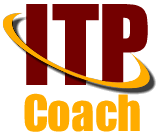On this site you receive more information about the combination of the Stakeholder Centered Coaching by Marshall Goldsmith (SCC-MG) and the ITP coach approach.
Since the book was recently published, worksite success stories must be formed first. Thank you for your understanding.
In the meantime, pleased read the foreword from Marshall Goldsmith.
800 Coaches – 200 Cities – 45 Countries – 35 Languages – 1 Process
Foreword from Marshall Goldsmith
“Executive coaching is designed to support professional and personal development to the point of individual growth and enhanced performance. Coaches need to have a profound understanding of diversity and cultural awareness in the work place as well as the ability to adapt their coaching style to different situations. Urs Milz reveals in this book a unique insight into an innovative IT project coaching process.
The Stakeholder Centered Coaching approach I developed has proven to help successful people make positive lasting change in leadership behavior through using a methodology that is highly effective and time efficient.
Many other coaching approaches focus on leadership assessments and action planning, which result in a strong emphasis on awareness. Out of this framework, the leader intellectually understands that leadership change would generate a higher effectiveness. Though this step is critical at the outset of the coaching process, it often results in a long action list of good intentions that might not see the light of day. Stakeholder Centered Coaching takes the leadership change process into the leaders work environment, while the ITP coach approach brings a teamwork enhancement process into IT projects. Stakeholders can provide important and insightful suggestions for behavioral change that would help the leader and IT project members to become more effective on the job. The Stakeholder Centered Coaching process includes a strong emphasis on action implementation and follow through. This helps to make change stick and creating more effective leadership behaviors and habits. Urs’ vision of the ITP coaching process focuses on establishing positive behaviors and habits to create outstanding results in IT project management.
The role of the coach has always been to improve the performance of others as it applies to sports, art or business. If leaders are to improve in their own practice of leadership, they need leverage. A coach adds value to the degree that the coach can help the leaders and teams gain leverage. Helping speed up the learning curve and turning that learning into productive behavior is why a coach is important.
When a person is asked to focus on a topic so personal as his or her own behavior, it is often useful to have an objective, experienced and qualified pair of eyes to assist in interpreting feedback and suggestions. This is where a coach adds enormous value. The coach’s perspective helps further develop the individual’s self-awareness.
Successful people welcome getting ideas that are aimed at helping them achieve their goals. The ITP coaching process is focusing back on positive teamwork to make people enjoy their work and achieve highly motivated their targets.
The independent role of an ITP coach as described in this book offers all requirements for a successful executive coaching to an IT project team. While executive coaching is a top-down approach, the ITP coaching process acts bottom-up. Those two approaches strongly integrate stakeholders and thus form an excellent complementary to the entire company’s success.”
― Marshall Goldsmith – Thinkers50 Top Ten Most Influential Management Thinker in World

